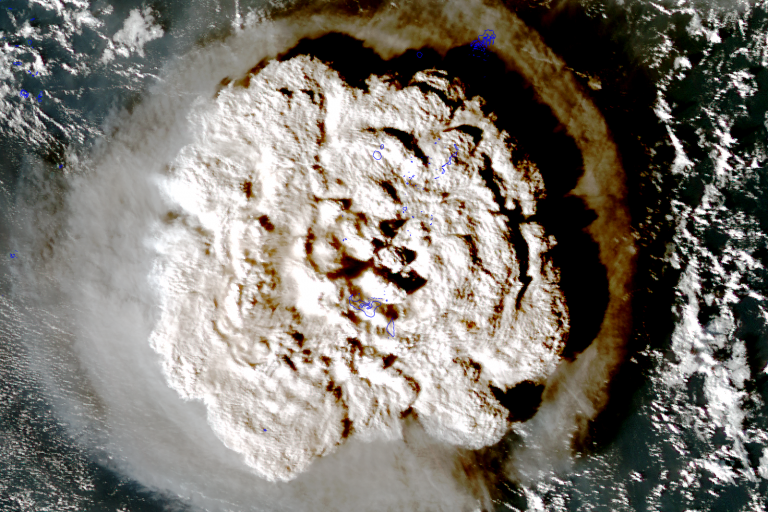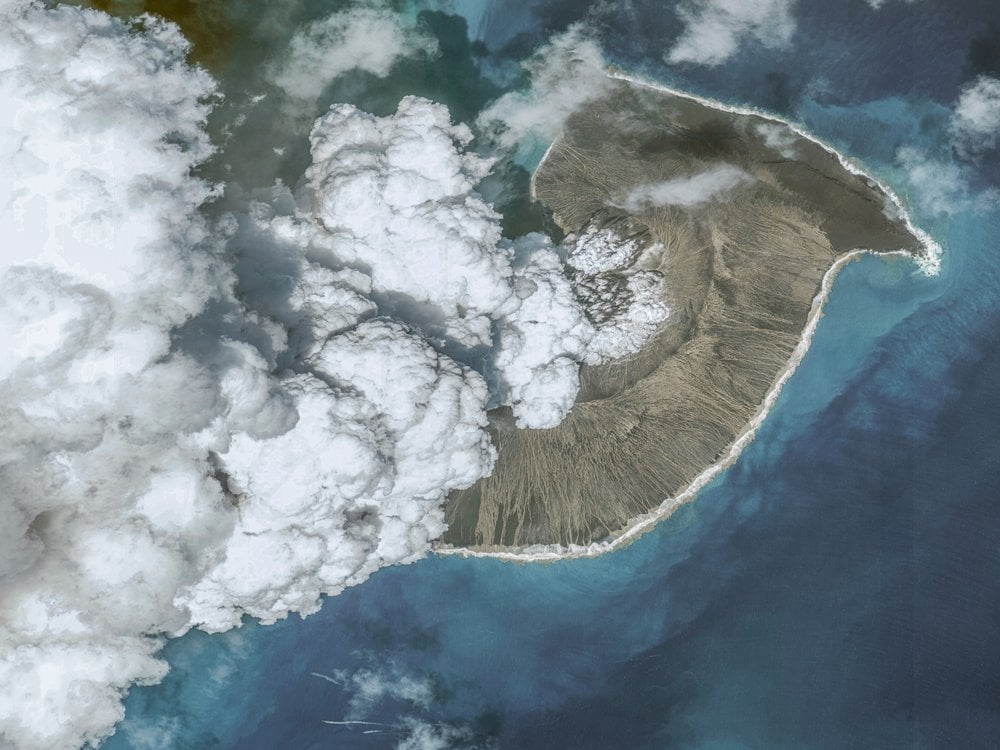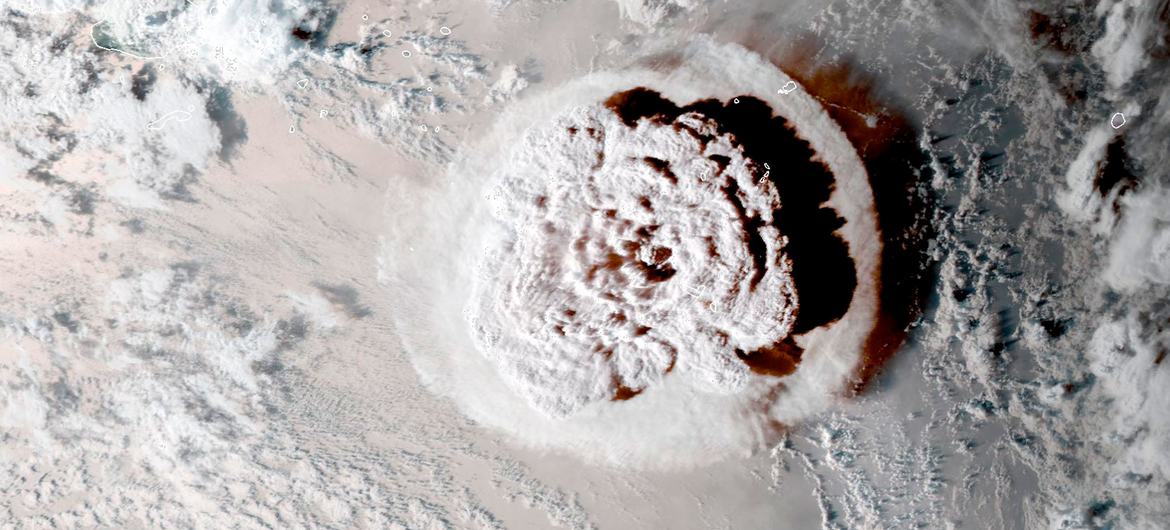Tonga eruption hurled an unprecedented amount of water vapor into the atmosphere that could influence atmospheric chemistry and lead to a temporary depletion of the ozone layer, NASA says
The record-breaking eruption of the Hunga Tonga-Hunga Ha’apai volcano in the South Pacific hurled an unprecedented amount of water vapor into the atmosphere, NASA says, warning this could temporarily weaken the ozone layer.
A new study, published in Geophysical Research Letters, found the eruption sent around 146 teragrams of vapor into the stratosphere, the layer 12 – 53 kilometers above Earth’s surface.
The space agency says this is “enough to fill more than 58,000 Olympic-size swimming pools” and equal to 10 per cent of the water already present in that atmospheric layer.
“We’ve never seen anything like it,” lead author Luis Millán, said, explaining water vapor readings went off the charts after the eruption.
“We had to carefully inspect all the measurements in the plume to make sure they were trustworthy.”
NASA said the extra water vapor could influence atmospheric chemistry and lead to a temporary depletion of the ozone layer.
“It could also influence surface temperatures,” it said.
“Massive volcanic eruptions like Krakatoa and Mount Pinatubo typically cool Earth’s surface by ejecting gases, dust, and ash that reflect sunlight back into space.
“In contrast, the Tonga volcano didn’t inject large amounts of aerosols into the stratosphere, and the huge amounts of water vapor from the eruption may have a small, temporary warming effect, since water vapour traps heat.”
The 14 January underwater eruption was the biggest explosion ever recorded by modern sensors.
It set off a sonic boom that circled the globe twice and sent a tsunami racing around the world.
Tonga’s government described the aftermath an “unprecedented disaster”, in its first official communication after a volcano-generated tsunami slammed into the nation.
Three people were left dead and dozens of homes were destroyed.
Its effects are still being felt, with spectacular sunrises and sunsets across Australia and New Zealand being attributed to the eruption.
This story was produced by Raffaella Ciccarelli, originally published at 9 News on 03 August 2022, reposted via PACNEWS.



